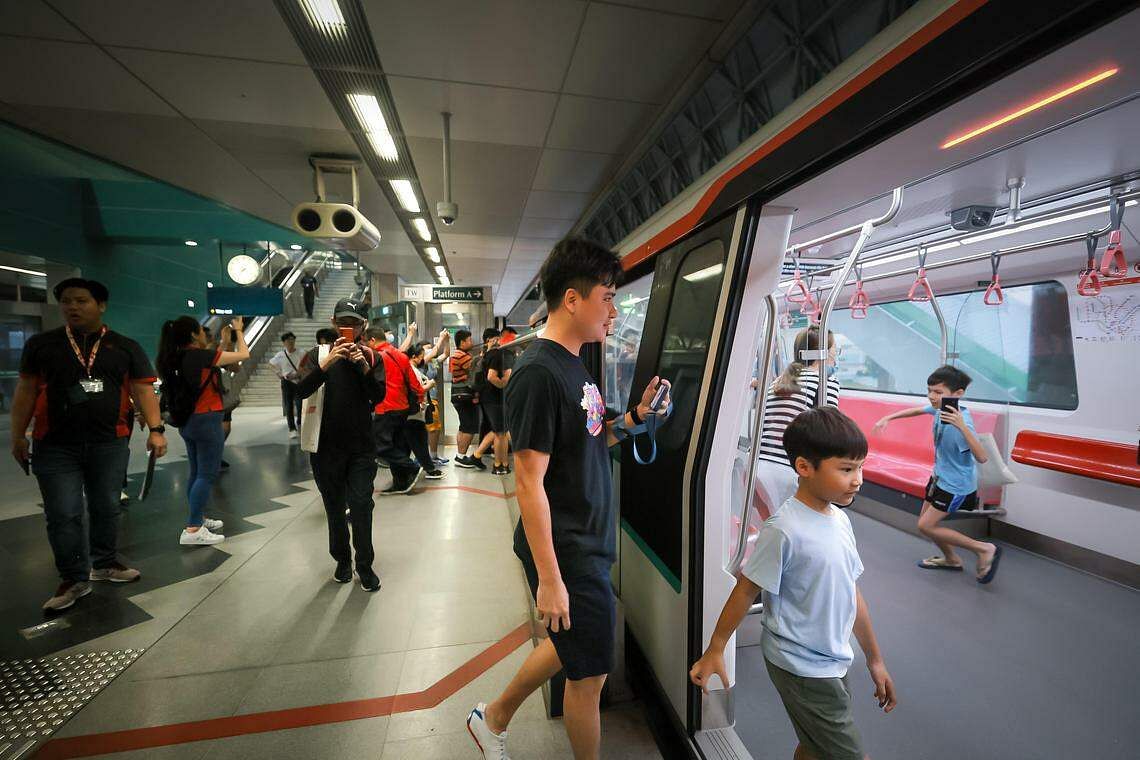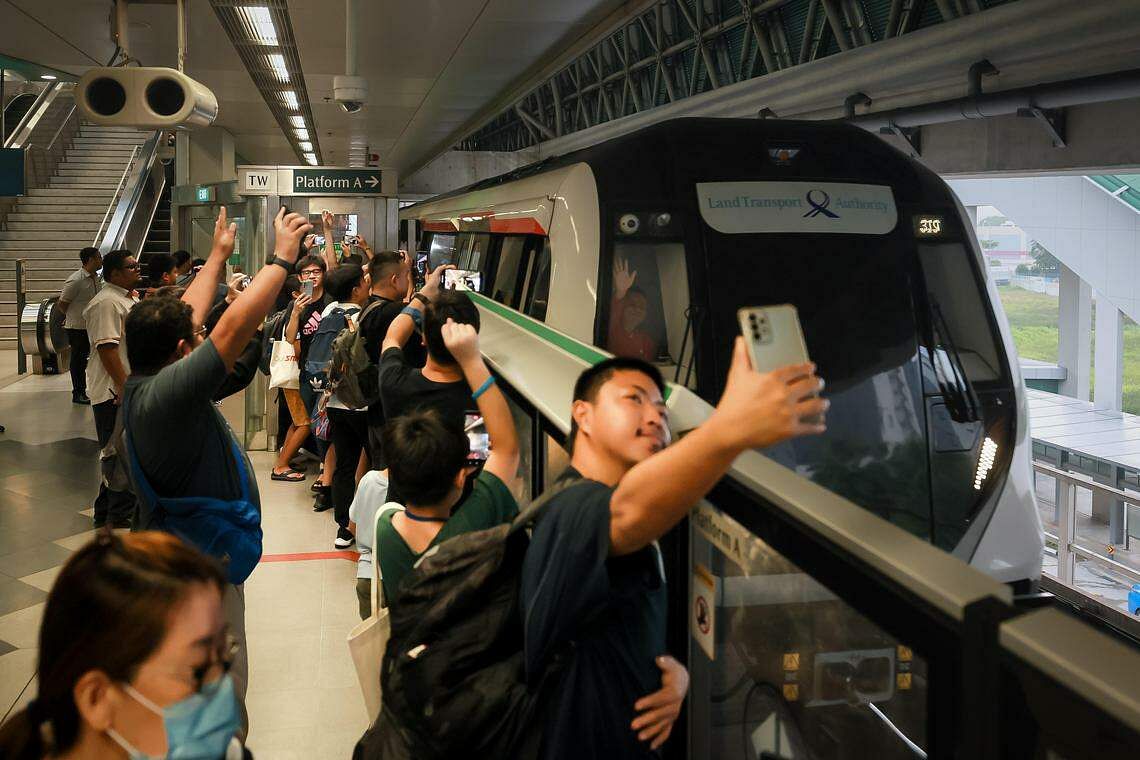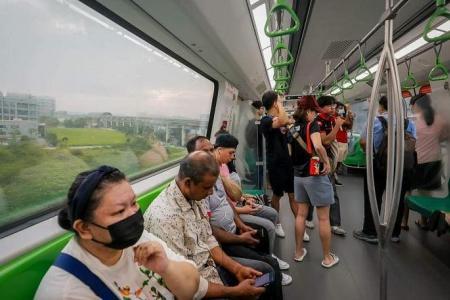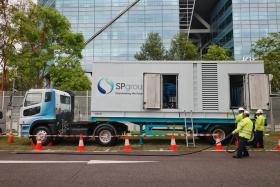Launch of first 7th-generation MRT train draws over 100 fans
As an Alstom Movia R151 train rolled into Tuas Link station, its operator sounded a horn, eliciting cheers from more than 100 people gathered to welcome it into service.
“Open, open, open,” they chanted at 7.12am on Sunday as the first of 106 seventh-generation trains to be launched on the North-South and East-West lines (NSEWL) slowed to a halt, before its doors opened for commuters to board.
Among those waiting in anticipation was primary school pupil Tan Teck Ern, accompanied by his parents and six-year-old brother.
The nine-year-old woke up at 4am for the occasion. By about 6am – the usual time he gets out of bed for school, he was at Tuas Link station with his family, making the trip from their home in Bishan.
Like many other fans there, he could rattle off features of the new train effortlessly.
He looked forward to seeing its LCD route map display – similar to the ones on the fifth- and six-generation trains. When he got onboard, his first impression of the cabin was “bright”, which he attributed to its large single-frame windows – a distinct difference between the seventh-generation model and its predecessors.

The new trains have cabins with more open spaces to accommodate strollers and wheelchairs as well as perch seats that take up less space than conventional ones, allowing for a greater passenger capacity.
Among those who turned up to also quiz SMRT Corporation staff and compare train collectibles was Mr Jeremy Teng, who considers himself a train enthusiast of about five years.
The 25-year-old, who is between jobs, said he was thrilled to be at a train launch, having missed others because he could not wake up in time.

Mr Teng said he is most intrigued by the different motor sounds each train model makes during acceleration and deceleration, and looks forward to acquainting himself with those made by the new R151 model.
“We have seen our rolling stock go from very basic trains, having nothing inside, to having all these features like the self-test system as well as the LCD screens that give passengers information on their route,” he added.
SMRT’s Tuas West Depot fleet manager Yusmar Yusof said the self-test system, which takes about 12 minutes to run every morning, has helped maintenance staff to optimise their efforts by pinpointing issues linked to, say, the air-conditioning, doors, brakes, propulsion and auxiliary power systems.

The system also saves staff time and makes checks more routine, as some of these tests would otherwise have to be conducted manually, and done minimally once every three weeks.
Mr Yusmar said the trains were designed with the input of SMRT engineers, which led to them being easier and safer to maintain.
For instance, the 34-year-old said air-conditioning filters on previous models were replaced via the train’s roof, which exposed workers to height risks, but the job can now be done from within the cabin.

The Land Transport Authority purchased 66 of the 106 new trains in a $1.2 billion deal in 2018 to replace the first-generation NSEWL Kawasaki trains, which have been operating since the two MRT lines opened in 1987.
It bought another 40 trains in 2020 for $337.8 million to replace the second-generation Siemens and third-generation Kawasaki-Nippon Sharyo trains.
The remaining 105 seventh-generation trains will be put in service on the NSEWL progressively till end 2026.
The fourth- to sixth-generation trains on the two lines were manufactured by Kawasaki Heavy Industries and CSR Qingdao Sifang. They comprise 92 trains, of which the first began operations in 2011.
Get The New Paper on your phone with the free TNP app. Download from the Apple App Store or Google Play Store now


